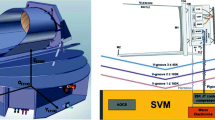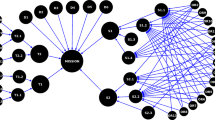Abstract
This paper first outlines the assumed mission requirements for a radiatively cooled space telescope such as EDISON. A summary of relevant characteristics (payload, operating orbit, launcher, lifetime, etc.) for current and proposed cooled telescope missions is then given. This summary includes cryogenic and radiatively cooled missions since in both cases the reduction of heat input to the telescope aperture is a dominant factor in the orbit choice. These missions span the entire range of possibilities from low earth circular, through higher elliptical and circular orbits out to deep space locations such as the Sun-Earth (S-E) libration points and the lunar surface.
A full listing of the factors affecting mission selection is then given. The most important points are illustrated by reference to the orbits chosen for ISO, FIRST and SIRTF and those recommended in recent studies of EDISON. Launcher capabilities for direct insertion and the onboard propellant for large velocity changes associated with orbit raising are major constraints in achieving the large payload mass to high orbit which EDISON mission requires. Although it is fairly demanding in launch/boost energy, an orbit about the L2 S-E libration point offers important advantages for a radiatively cooled infrared telescope. Further studies of this orbit and the associated aspects of service module and payload design for the L2 location of EDISON are recommended.
Similar content being viewed by others
References
Cryogenically Cooled Telescopes
Cesarsky, C.J. and Kessler, M.F.: 1990. “The Infrared Space Observatory”, p. 205–214 in Proceedings of the 123rd IAU Colloquium, “Observatories in Earth Orbit and Beyond”, edited by Y. Kondo. Kluwer Academic Publishers.
ESA Astronomy Working Group 1987. ISO 24 hour Orbit. ESA/SPC (87) 14 plus Attachment ASTRO (87)7.
Mather, J.C. et al.: 1990. “Early Results from the Cosmic Background Explorer (COBE)”, p. 3–8 in “Observatories in Earth Orbit and Beyond” (see Ref.A1).
Werner, M.W. et al.: 1989. “SIRTF in High Earth Orbit” p. 387–400 in Proceedings of the 3rd Infrared Detector Technology Workshop. NASA TM-102209.
Fazio, G.G. and Eisenhardt, P.: 1990. “The Space Infrared Telescope Facility (SIRTF)” p. 193–203 in “Observatories in Earth Orbit and Beyond”. (See Ref A1).
ESA 1991 STEP: Satellite Test of the Equivalence Principle. Assessment Study Report SC1(91)4.
Radiatively Cooled (Ambient Temperature) Telescopes
Frisk, U.: 1990. “FIRST — Far Infrared and Submillimetre Space Telescope” p. 37–45 in ESA SP-314. Proceedings of the 29th Liege Astrophysical Colloquium “From Ground Based to Spaceborne Sub-mm Astronomy”.
Wilson, R.: 1990. “LDR — A Submillimetre ‘Great’ Observatory.” p. 215–219 in ESA SP-314 (See Ref. B1)
Melnick, G.J. et al.: 1990. “The Submillimetre Wave Astronomy Satellite (SWAS)’ p. 251–256 in ESA SP-314 (See Ref.B1)
Phillips, T.G.: 1990. “A Submillimetre Mission for the 1990's” p. 221–228 in ESA SP-314 (See Ref B1)
Nordh, L. et al.: “MOSES — A proposed Swedish Submillimetre Satellite for Combined Astronomical and Atmospheric Observations” p. 387–389 in ESA SP-314 (See Ref B1).
Strukov, I et al.: 1990 “RELICT-2 Project. Scientific Programme and Structure” p. 99–104 in ESA SP-314 (See Ref B1).
Thronson, H.A. et al.: 1990 “EDISON: A Second Generation Infrared Space Observatory” p. 501–506 in “Observatories in Earth Orbit and Beyond” (See Ref A1).
Davies, J.K. et al.: 1990. Radiatively Cooled Telescopes: A New Direction for Infrared Astronomy. Acta Astronautica. 25, 233.
Hawarden, T.G. et al.: 1989. “POIROT: A Passively Cooled Orbiting Infrared Telescope.” Proposal to ESA for the next medium sized (M2) project.
Orbit Trade-Offs
Roth, E.A.: 1984. “Mission Analysis Aspects.” p. 113–116 in ESA SP 226. Kilometric Optical Arrays in Space.
Taylor, B.G.: 1990. “Relative Merits of Low Earth, Eccentric, Geosynchronous and Interplanetary Orbits and Sites in Space.” p. 377–379 in “Observatories in Earth Orbit and Beyond” (See Ref A1).
Farquhar, R.W. and Dunham, D.W.: 1990. “Use of Libration — Point Orbits for Space Observatories.” p. 391–395 in “Observatories in Earth Orbit and Beyond” (see Ref A1).
Lunar Based Astronomy
Smith, H.J.: 1990. “Lunar Based Astronomy.” p. 365–375 in “Observatories in Earth Orbit and Beyond” (See Ref A1).
Mumma, M.J. and Smith, H.J. (Ed): 1990. Astrophysics from the Moon. AIP Conference Proceedings 207.
NASA 1988. Proceedings of Workshop on Future Astronomical Observatories on the Moon. NASA Conference Publication 2489.
Parkinson, R.C., Conchie P.J. and Hempsell, C.M. Potential Evolution of an International Moon Based Programme. IAA-90-641.
Launchers
Krause, R.B.: 1990. “United States Launch Vehicle Systems.” p. 325 – 332 in “Observatories in Earth Orbit and Beyond”. (See Ref A1).
Feustel-Beuchel, J. and Wamstekeer, W. ESA's Space Transportation System. p. 333–338 in “Observatories in Earth Orbit and Beyond”. (See Ref A1).
Author information
Authors and Affiliations
Rights and permissions
About this article
Cite this article
Farrow, J.B. Orbits for radiatively cooled space telescopes. Space Sci Rev 61, 187–210 (1992). https://doi.org/10.1007/BF00212483
Issue Date:
DOI: https://doi.org/10.1007/BF00212483




